Ready to become a slasher scientist? Read the first part of my column about the craft of the slasher film, and then dive deep into this list with all the fervor of Jason Vorhees swinging his favorite machete.
FOUNDATIONS
Explore the foundations of the subgenre with some of these legendary films you’ve almost assuredly seen multiple times, and some overlooked influencers that birthed the slasher boon.
"Black Christmas"
Unlike many, I didn't personally care for this film, but its influence can't be ignored. The slasher POV camera view starts off the movie with a tension-drenched bang. Add in the compressed setting of a sorority house, perhaps the first "final girl" in slasher history, and a nihilistic ending that has the discipline to not disclose the killer's motivations or identity, and you have all the makings of an influential cult-classic.
The director, Bob Clark, went on to direct another Christmas-themed movie: A Christmas Story. And he famously told John Carpenter he had a sequel idea for Black Christmas, where the psycho would return to his hometown on a different holiday. He planned on calling the film Halloween.
"Halloween"
Perhaps not the true granddaddy of the slasher genre as it was pre-dated by Black Christmas and The Texas Chainsaw Massacre, still, John Carpenter’s Halloween defined the subgenre for a generation by introducing the iconography of a hulking, slow-moving, unstoppable, masked killer on the loose in an otherwise serene setting.
The movie sprouts from the genius of John Carpenter’s low-budget bootstrappery, wringing more scares and brooding tension out of the film with less blood, killing, and Michael Myers than the casual fan may remember. The perfect deployment of the first-person POV convention became a slasher staple and Laurie Strode defined a generation of “final girls” with Jamie Lee Curtis’s raw performance as she fought her own terror—and a psycho killer—to not just survive the movie but play an intricate role in defeating the villain. Throw in an epic Donald Pleasance performance as a weary Captain Ahab archetype who hypes Michael’s presence as a force of pure and malevolent evil and the chilling score, and you’ve got a horror classic for the ages.
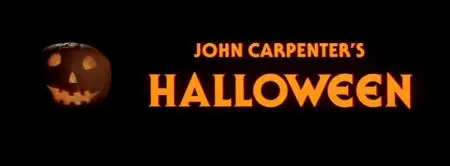
"A Nightmare On Elm Street"
Wes Craven revolutionized the slasher during the peak of the movement with Freddy Krueger. His mask was burn scars and his ferocious, knife-glove weapon became his signature. He talked when his contemporaries, Jason and Michael, didn't. He stalked the teens of Springwood in dreams, allowing the talented director to let his imagination run wild, turning out glorious, metaphysical kills, all in the inescapable setting of one’s own mind.
In the original, Freddy lacks the glibness he’d acquire in the sequels and is truly nightmare fuel, stalking and laughing and growling his way through Craven’s surreal setpieces.
"The Texas Chainsaw Massacre"
An early influencer that stands apart from the tight, repeatable formula to emerge in the 80’s slasher peak. The killer doesn’t stalk the kids in the house; the kids stumble into the house. The final girl flees and survives, but never takes a stand against her would-be killer. Leatherface himself stalks and maims like a slasher, has a mask and a signature weapon, but without the revenge element, just the goal of feeding himself and his cannibalistic family of weirdos. Many scenes are sun-scorched, which always adds something to a horror scene—naked, broad-daylight scares are among the most potent.
Tobe Hooper’s low budget gem transcends the subgenre it helped create and like Halloween, it’s not just a slasher classic, but a horror classic.
"Friday the 13th Part 2"
Built off the momentum of the original’s shocking final moments, this is the movie that introduces the horror universe to one of its most famous characters in the flesh—Jason Vorhees.
A popular pick for the absolute scariest entry in the entire series, this is a worthy sequel that depicts Jason Vorhees as a vicious yet very human killer. He wears a sack over his head with one hole instead of his signature hockey mask, which is a freaky and underrated costume choice for inflicting terror on his hapless victims as well as haunting the audience.
We get some truly effective jump scares including a seminal “just a cat” scene early in the movie, and the final girl proves a match for Jason, finding a way to do battle with him psychologically, making the climax one of the better setpieces (and settings) in slasher history.
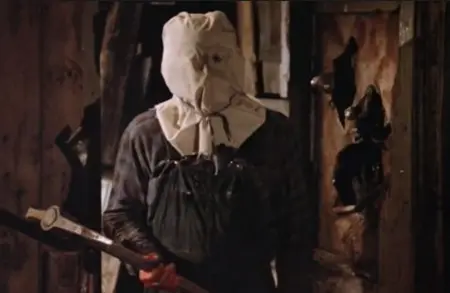
PEAKS
These picks represent the peak of the slasher movement—the best sequels and overlooked slasher movies that represent some of the best the subgenre has to offer.
"Friday the 13th Part VI: Jason Lives"
The true bloodbath of the Friday the 13th franchise is among the fans jockeying to rank the best installments—the groundbreaking, Jason-less original? The truly scary, grounded horror of Part 2? Or maybe the twists, turns, kills, and cast of the popular Final Chapter installment?
All worthy of argument, but the pinnacle of the franchise—and perhaps the entire subgenre—is the wild, entertaining, ride of Jason Lives.
This is the sequel that leverages all the mythology that came before it, giving a now-undead, unstoppable, superpowered Jason a worthy foil in the now-grown Tommy Jarvis, played by the endearing Thom Matthews of Return of the Living Dead.
Trading in the forced nudity of its predecessors to create characters that you don’t want to see murdered, Jason Lives positions Jason as an unstoppable villain instead of a brutal antihero, and for once, the hero has a plan to kill Jason for good (although we know now such plans never work out for the long-term).
By creating an undead Jason that permeated the popular culture as the identity of the character, and freshening the tone of movie slashers with the audience in mind (cue the gravedigger who says, “Now why’d they go and dig up Jason?”), this sequel sows the seeds for the meta-horror of Scream and Cabin in the Woods while delivering one of the best pure audience films in slasher history.
"A Nightmare on Elm Street 3: Dream Warriors"
The slasher template can easily exhaust an audience since we are so far ahead of the characters—we know what they’re up against, only we know the doom that awaits around the corner—but this criminally-underrated sequel represents peak Freddy Krueger
We love this movie not only because of his surreal kills spiked with delightful, quotable one-liners, but because of the downtrodden group of damaged teens that knows the threat and has discovered a way to fight back on Freddy’s own turf.
Led by Nancy Thompson’s triumphant return to the franchise, our heroes empower themselves to match Freddy’s dream-imbued power—only to continually fail and die at his hands in one epic struggle after another.
The group-dreaming dynamic makes this one feel like Inception with a monster on the loose, and each kill is savagely suited to each character’s tragic weakness. A precision sequel that’s fun the whole way through.
![]() "The Burning"
"The Burning"
A cut above its 80s knockoff peers, this summer camp slasher was conceived without the influence of Friday the 13th (allegedly anyway), allowing it to surprise audiences by bucking final girl conventions.
Surprising patience, tension, and a cast of chatty, funny side-characters fill out the roster of potential victims. Of course the shears-wielding, burned-alive Cropsey is the real star—powered by Tom Savini’s gore wizardry and the Jaws-like patience to conceal the killer’s twisted visage until the climax, Cropsey unleashes a steady stream of brutal kills, including a seminal raft scene unparalleled in slasher film history.
"Scream"
The absolute peak of 1990s slasher horror, the first Scream knew all the rules—but it knew that you also knew all the rules—and clearly reflected the audience in the characters themselves, with a legendary opening sequence that got across the point that all bets were off.
Wes Craven returned to his roots and brought us a grounded, thrilling slasher movie heaped with distinct characters, brutal kills, and a finale that finally provided a realistic explanation for a slasher’s ability to seemingly teleport to score a surprise deathblow. Scream's writer, Kevin Williamson, followed up this script with a guilt-soaked tale of revenge in pure slasher form with I Know What You Did Last Summer, so Scream represents the start of a new powerhouse franchise (Scream lasted for four installments and spawned a TV series), it laid the foundations for meta-horror, and sparked a slasher movie renaissance.
The greatest trick that the movie pulls is that even with characters fully aware of the genre tropes and trappings of a slasher killer, they still die by the book in neat intervals in relatively conventional slasher fashion. Knowing the rules became a way to make the audience more vulnerable instead of the horror-comedy winkfests that currently infest the subgenre.
OTHER PICKS: Candyman, Child's Play, I Know What You Did Last Summer
![]() VALLEYS
VALLEYS
These trashtastic slashers fail at the moviemaking basics, transforming into hilarious, gross, and unpredictable essentials for true fans of the subgenre. Many of these picks stumble into some of the more indelible images and scenes of the slasher movement.
"Pieces"
Bearing a great title and a hall-of-fame worthy tagline on the VHS box/movie poster (“It’s exactly what you think it is!”), this slimy, disjointed tale of a sex and puzzle-obsessed kid growing into a psycho killer piecing together a woman from parts of his victims offers up a delightful batch of what the fuck? moments.
From the head-scratching, random silliness of the kung fu attacker to the truly batshit crazy, did that just happen? ending, Pieces carved a deserved place as a quintessential drive-in movie to enjoy with some Joe Bob Briggs’ commentary.
"Sleepaway Camp"
This beloved slasher clone tries to twist the first-person POV until it becomes just as much of a whodunit as it is a summer camp killfest. The ballsiness of the plot twist and the iconic ending shot that goes with it doesn’t quite redeem the movie, but it gives plenty of street cred to make it essential viewing for the true slasher aficionado.
OTHER PICKS: Slaughter High, Madman, The Prowler, Slumber Party Massacre
FINAL THOUGHTS
The entire reason to make lists on the internet is for people to argue about what you got wrong, what you missed, or where you're mistaken.
So grab your pitchforks, torches, butcher knives and machetes and sound off in the comments: what's your favorite slasher? Why?
I'm running through the woods. The car won't start. You're after me. What happens next? Let's find out in the comments . . .
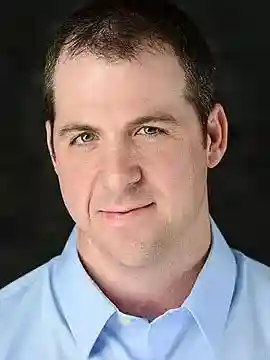
About the author
Fred Venturini grew up in Patoka, Illinois. His short fiction has been published in the Booked Anthology, Noir at the Bar 2, and Surreal South '13. In 2014, his story "Gasoline" is featured in Chuck Palahniuk's Burnt Tongues collection. The Heart Does Not Grow Back, published by Picador in 2014, is his first novel. He lives in Southern Illinois with his wife and daughter.
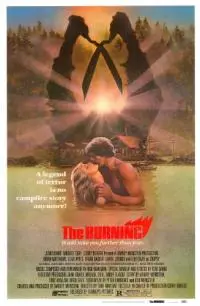 "The Burning"
"The Burning"
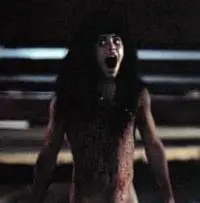 VALLEYS
VALLEYS







